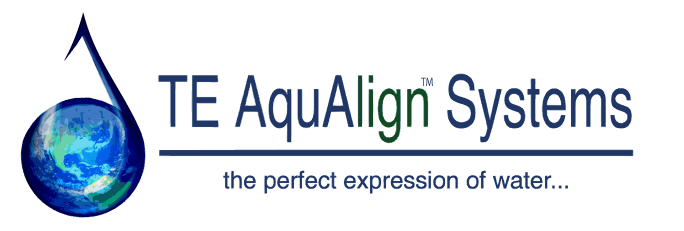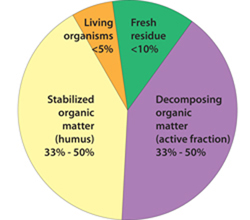

In the News…
“Droughts in Western US Persist”
In International Business Times, David Kashi looks at the 2014 projections for drought conditions across the USA. http://www.ibtimes.com/droughts-western-us-persist-while-east-remains-good-shape-us-department-agriculture-maps-1542889. With information updated weekly, you can follow the current and forecasted conditions across the USA at this website:
http://droughtmonitor.unl.edu“Researchers See Added Nutritional Benefits in Organic Milk”
From Washington State University, this Science Daily article highlights the results of the first large-scale, US-wide study comparing the nutritional values of organic versus conventional milk. And while conventional milk is good for you, organic milk is simply better... Due, they suggest, to greater reliance on pasture and forage-based feeds on organic dairy farms.
http://www.sciencedaily.com/releases/2013/12/131211134235.htm
“New High-yield Pepper Plant Introduced”
Reported in Vertical News, Texas A&M University has recently announced the release of an F1 hybrid pepper with high yields, particularly in early season. Fresh market growers can read more about the Caro-Tex 312 hybrid in this article:
http://agriculture.verticalnews.com/articles/10825414.html
“Did the Drought Hurt Your Soil?”
At Farms.com, Stu Ellis talks about possible damage to the soil itself resulting from the long-running drought in parts of the USA, and possible ways toward recovery. See the full commentary here:
http://www.farms.com/ExpertsCommentary/stu-ellis-did-the-drought-hurt-your-soil-59096.aspx
“Improving Agriculture from the Ground Down”
Historically, research has focused on plant above-ground growth, but this Podcast hosted by Kerry Klein from Science AAAS explores the burgeoning understanding of Root Growth in plant yield. In wheat, less than 4” of depth in root growth can drastically improve the plants’ drought tolerance. Hear more:
http://news.sciencemag.org/sciencenow/2013/02/-podcast-improving-agriculture-f.html
“Where Cows are Happy”
Can the bottom-line be maintained on a diary farm with open pasturing and no antibiotics? Bob Bansen of Yamhill, Oregon claims so in this New York Times article by Nicholas Kristoff. Read more here:
http://www.nytimes.com/2012/09/09/opinion/sunday/kristof-where-cows-are-happy-and-food-is-healthy.html?ref=factoryfarming
“How Millions of Farmers are Advancing Agriculture for Themselves”
System of Crop Intensification (SCI) originally developed for rice (SRI) is now in use and producing bumper yields for wheat, mustard, millet, maize, legumes and vegetables. Sometimes called System for Root Intensification this article by Jonathan Latham outlines the potential. Read more here:
http://www.independentsciencenews.org/un-sustainable-farming/how-millions-of-farmers-are-advancing-agriculture-for-themselves/
“Teaming with Soil Microbes…”
With average annual rain-falls of 16”, and weather spawned crop failures 4 years in a row, Gabe Brown of North Dakota had to get it right when he focused on soil health. As this two-part article by Brian Devore in the Twin City Daily Planet says, a decade later, his profits say Brian made the right choice. Read more here:
http://www.tcdailyplanet.net/blog/brian-devore/teaming-soil-microbes-investing-soil-essential-good-farm-policy“Usage, Population & Sprawl Push Advancement In Irrigation”
As the pressures on water use grows, and the resource becomes more expensive, scientific research has focused on what plants need… which is leading to a revolution in farm irrigation methods. From the Fruit Grower’s News, this article by Derek Sigler speaks to the issues and possibilities. Read more:
http://www.fruitgrowersnews.com/index.php/magazine/article/usage-population-sprawl-push-advancements-in-irrigation
In the Views…
Managing Liquid Assets - Field Capacity
It is a given that wise water management is critical to successful agriculture as recurring drought conditions become the “new normal”. Regions where irrigation has always been necessary, are now feeling the pressure of needing to do more with less as the source of irrigation water literally dries up. Aquifers are being depleted at an alarming rate, as are reservoirs and river sources. Water rationing has begun to take its toll on farmers as access to water, even in their own wells, is being monitored and drastically curtailed by government agencies.
Farms where irrigation was only used occasionally to supplement rain-fall are finding they have to augment on a more regular basis, adding to cost, and further stressing their water resources. Those areas which have relied solely on what Nature provides through rainfall, having no prior investment in irrigation equipment, are now faced with having to do so… Which is an expense that is best planned for rather than faced during a water shortage crisis, where crop failure is imminent. Such was the unfortunate case in many areas during the summer of 2012.
So what can we do to help offset this problem?
Augmenting my own views on the matter, is the experts’ advice to practice various methods of water conservation including such efforts as improved irrigation methods (most typically drip-systems), the planting of drought tolerant crop varieties, new tilling methods, planting cover crops, and so on. It can get very complicated very quickly and a quick “Google” on the topic provides a lot of information; however one factor in the equation that is consistently referenced in the majority of those opinions speaks to “Field Capacity”.

Field capacity relates to a soil’s relative ability to retain water within the plants’ root zone. My interest was piqued in particular by the degree of positive impact that organic matter can have on the field capacity. The type of soil particle, the air pockets around the soil particles, plus the amount of organic matter in the soil, all affect the soil’s ability to hold water and keep it within reach of the plants’ roots (usually considered to be within the top 4 to 5 feet of the soil). Soils with the right balance of organic matter can act much like a sponge, holding via capillary forces, the water necessary for crop growth. And the impact of this ‘capacity’ makes a huge difference in the requirement for augmentation through irrigation.
It is of note that many soils can hold 2 to 3 inches of water in each foot of soil depth, and soils that contain higher percentages of organic matter can hold significantly more. To ensure crops get the water they need, the consistent advice from the experts is that growers should ideally keep their soil moisture near field capacity to a depth of at least 4 feet. During peak growth periods, plant transpiration together with surface evaporation can draw as much as a half-inch of water per day! So it becomes vital to understand your soil… its field capacity, and augment that capacity with organic matter where and as possible… And as water becomes more scarce, more highly regulated and (of course) more expensive, this issue is paramount in managing your ‘liquid assets’.
The reality is, the more water you can store in your soil, the less water you will need to provide through supplemental irrigation, and it would seem that the addition of the right amount of composted organic matter can be key to getting the balance right… And that balance is quickly becoming pivotal to a grower’s annual profit or loss!
Contributed by: J.G. Byerlay, Staff Biologist
Managing Liquid Assets - Considering Humus
As an avid gardener I have always had an appreciation of what I call “good clean dirt”. I come from a long line of family who truly appreciate the good earth. Having spent many happy hours playing in it as a child (actually being encouraged to go out and get dirty), and then later as an adult working it, feeling its texture, absorbing its rich aromas, and ‘partnering’ with it to nurture the plants I grow, it still feels like play to me (and yes I still get dirty).
I read a quote recently that said “Gardening is cheaper than therapy and you get Tomatoes.” That sentiment pretty well sums it up for me. Through years of close contact and study, I have accumulated some small knowledge regarding soil, but as a biologist, I know there are a vast number of secrets left to be revealed.

One of the facts I have learned, is that much of what we call soil, if it’s healthy soil, is comprised of stabilized organic matter or Humus. That is, organic matter that has decomposed to the point that it will break down no further and therefore reached a point of stability. It is this humus that has also been called the “life force” of soil and unfortunately it is missing or inadequate in much of the agricultural soil today. There are many ‘whys and wherefore’s’ for the loss, but this pie chart (from the USDA NRCS website) illustrates just how important the humus content is in “healthy soil”.
To that point, I found the following quote in a blog by Aurora Fabry-Wood, Staff Biologist with Soil Secrets LLC and thought it worth sharing:
“Arid lands across the globe are being impacted by water shortages that are having grave economic consequences. In the arid west of the United States, this is causing a conflict between cities and agricultural entities which are competing for the same water! At the same time, arid soils have been compromised due to common management practices and therefore are not functioning at optimum capacity. As a result, these soils provide relatively low levels of water and nutrition to vegetation. These compromised soils lack or are deficient in Mycorrhizal fungi and Humic substances; both Mycorrhizal fungi and Humic substances greatly increase a soil’s capacity to hold water and a plant’s ability to uptake nutrients.
If we do not restore compromised arid soils, we cannot maximize crop success nor the conservation of water in arid lands of the Western United States, nor anywhere else on the globe.”
Healthy soil is a lot more than my so called, “good clean dirt”, it is an ecosystem including water, oxygen and nutrients, that supports synergistic relationships between a host of organisms at the micro level, that works to support life at the macro level. Healthy soil is key to not only healthy crops, but to the sustainability of the air and water necessary to support them.
NB: I’d encourage you to visit the NRCS website. It contains a wealth of information valuable to any agricultural endeavour. Here is a link to the Soil Biology portion of the website for those who may be interested: http:// soils.usda.gov/sqi/concepts/soil_biology/soil_food_web.html
Contributed by: J.G. Byerlay, Staff Biologist